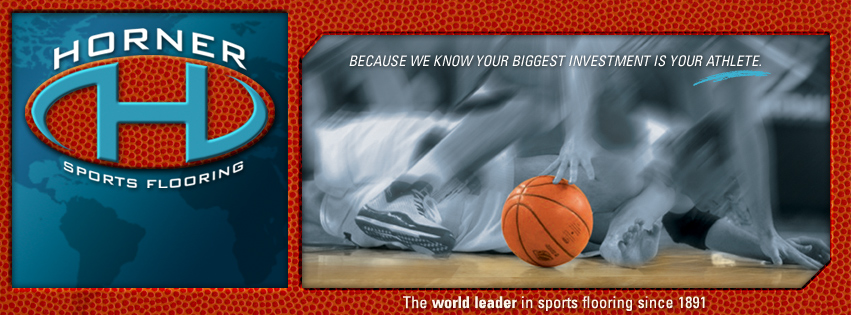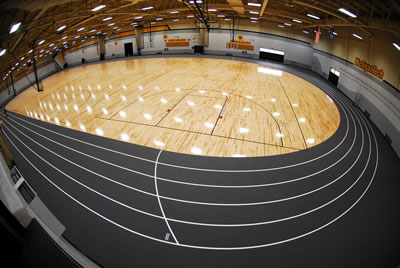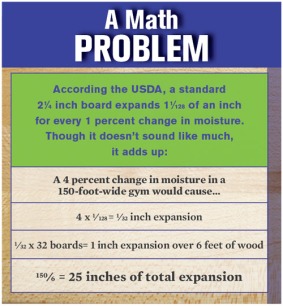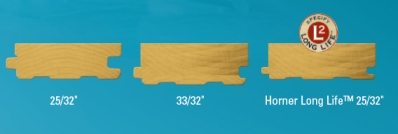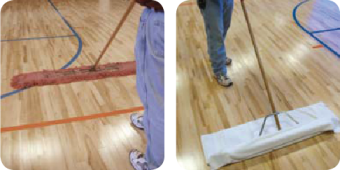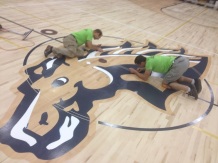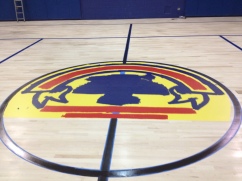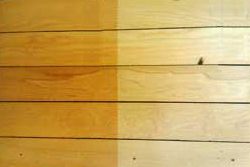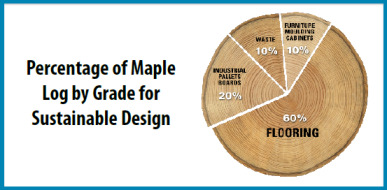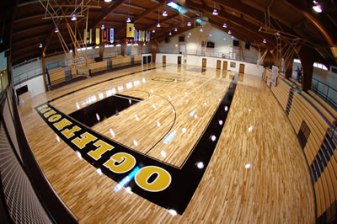 Basketball Hardwood vs. Synthetic Flooring – Is one better?
Basketball Hardwood vs. Synthetic Flooring – Is one better?
When considering what type of hardwood, maple flooring that will be used in a new or renovated gymnasium, the athletes, basketball and others, playing on the floor are of up-most importance, but so is the maintenance of the hardwood flooring.
When purchasing a sports floor, you should consider a floor that:
- Follows PUR standards, set by the Maple Flooring Manufacturers Association (MFMA)
- PUR standards focus on:
- Shock absorption
- Vertical deflection
- Area of deflection
- Ball bounce
- Surface friction
- PUR standards focus on:
- Is safe, providing proper surface friction for the intended use, like basketball games and other athletic activities, for the life of the floor
- Provides ample shock absorption, for those basketball free throws, to reduce the risk of injury
- Couples a reasonable initial investment with added Life Cycle Cost Benefits
- Has a track record for longevity and documented history of success in similar applications, like the many floors Horner Sports Flooring has installed
- Is manufactured by a reputable company that stands behind their product, like Horner Sports Flooring
- Is installed by factory-trained, accredited professionals, like one of Horner Sports Flooring’s many partners
- Is easily maintained
Horner Sports Flooring is the oldest and longest-standing member of the MFMA, with roots dating back to 1891 – the same year basketball was invented.
We have a long history in hardwood flooring, but we also have a product line of synthetic systems. All of our systems are specialized for virtually every sports activity and engineered for the very best in athletic performance, structural integrity, trouble-free maintenance, and long-lasting appeal.
We encourage those looking into athletic, hardwood flooring to consider all the uses that their flooring will be experiencing – that is what makes the difference between hardwood and synthetic flooring.
Hardwood flooring has the aesthetics and performance that is associated with competing athletes. The sub-flooring for hardwood is designed specifically to have shock absorbency to prevent injuries in the athletes. The downside to purchasing hardwood flooring, though, is the cost and maintenance.
So, although hardwood flooring is ideal for the athletes playing on it, multiple uses of the gymnasium may warrant for consideration of synthetic flooring. Frequent conversions between uses will have less wearing to synthetic flooring at it will to hardwood flooring. Also, a much considered benefit of synthetic flooring is the price.
Deciding what type of athletic flooring to use is an important endeavor and one should ask themselves some questions.
Consider these:
- Sport-specific, multiple sports, or multi-purpose?
- Top level competition or recreational activities?
- Number of participants and spectators
- Number of hours/day and days/year the facility will be used?
- Special equipment use (bleachers, sound stages, lifts, portable backstops, etc.)?
- Desired life expectancy of floor?
- Budgetary considerations – initial cost versus total cost of ownership?
We hope you research and make the considerations you need to make the best choice for your gymnasium flooring. Horner Sports Flooring is happy to help with any of your questions or concerns. We look forward to hearing from you!
